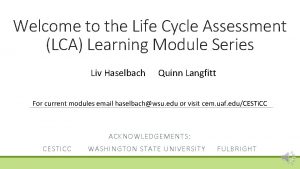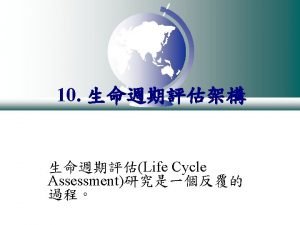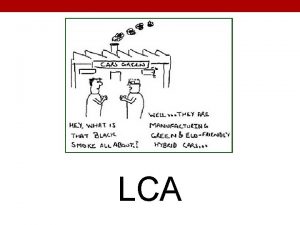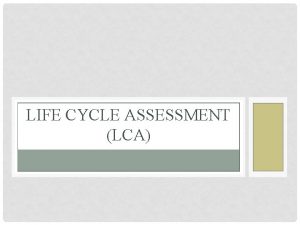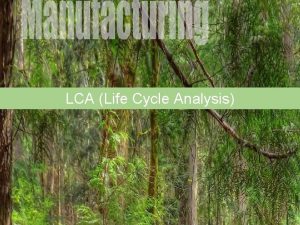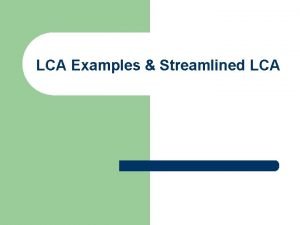LIFECYCLE ASSESSMENT The life cycle assessment LCA was





- Slides: 5

LIFECYCLE ASSESSMENT The life cycle assessment (LCA) was conducted using Sima. Pro Life Cycle Assessment Software and information from the Eco. Invent database to quantify the environmental impact associated with manufacturing, distributing and disposing of our two arborloo designs compared to Peter Morgan’s original design. Figure 5 below shows the environmental impact of each base option measured in ecopoints. The larger the ecopoint score, the greater the negative environmental impact. The results show that our designs generate about 3. 5 times less negative environmental impacts than Peter Morgan’s.

LCA ASSUMPTIONS One of the main assumptions made for this analysis is that the bases will be made in Le Borgne, Haiti. The majority of the negative environmental impact is because of the amount of fossil depletion needed for lorry transportation of materials. Portland cement and the ¼” rebar for the handles will come from Santo Domingo, Dominican Republic, be trucked to Cap Haitien, Haiti, and then be trucked to Le Borgne, Haiti (255. 2 miles). The sand water being used will be coming from Le Borgne, Haiti and have very few environmental impact because of their local abundance. The small amount of polystyrene being used in the bases would be coming from recycled Styrofoam clamshell containers, which are also very abundant in Haiti in the form of trash. The coconuts in our design would be gathered and crushed manually. The use of these recycled materials is the major reason for the small ecopoint values of our designs. A small number ‘single unit truck miles’ were accounted for the transportation of the coconuts around Le Borgne. Both concrete arborloo bases had the same materials and used the same processes, just in differing amounts. Peter Morgan’s base only used Portland cement, sand, rebar, and water. The material amounts used for the LCA are consistent with those stated in the Bill of Materials. One recommendation to get the ecopoints values even lower for our designs would be to use even less Portland cement and to try use recycled rebar from Le Borgne.

ASSUMPTIONS

TOTAL ENVIRONMENT IMPACT

TOTAL ENVIRONMENT IMPACT INCLUDING PLASTIC BASES
